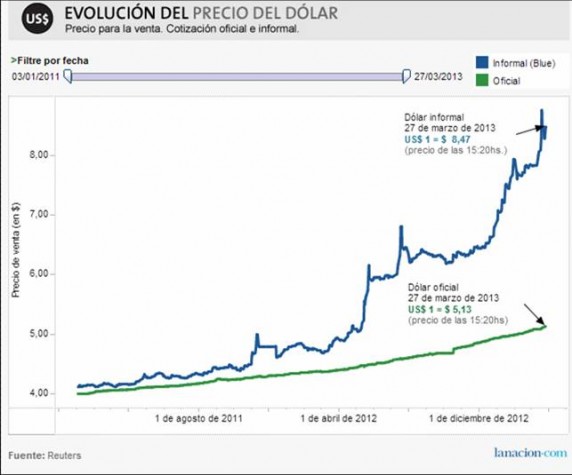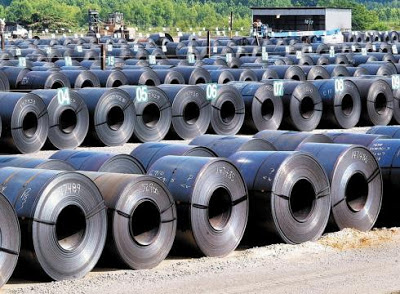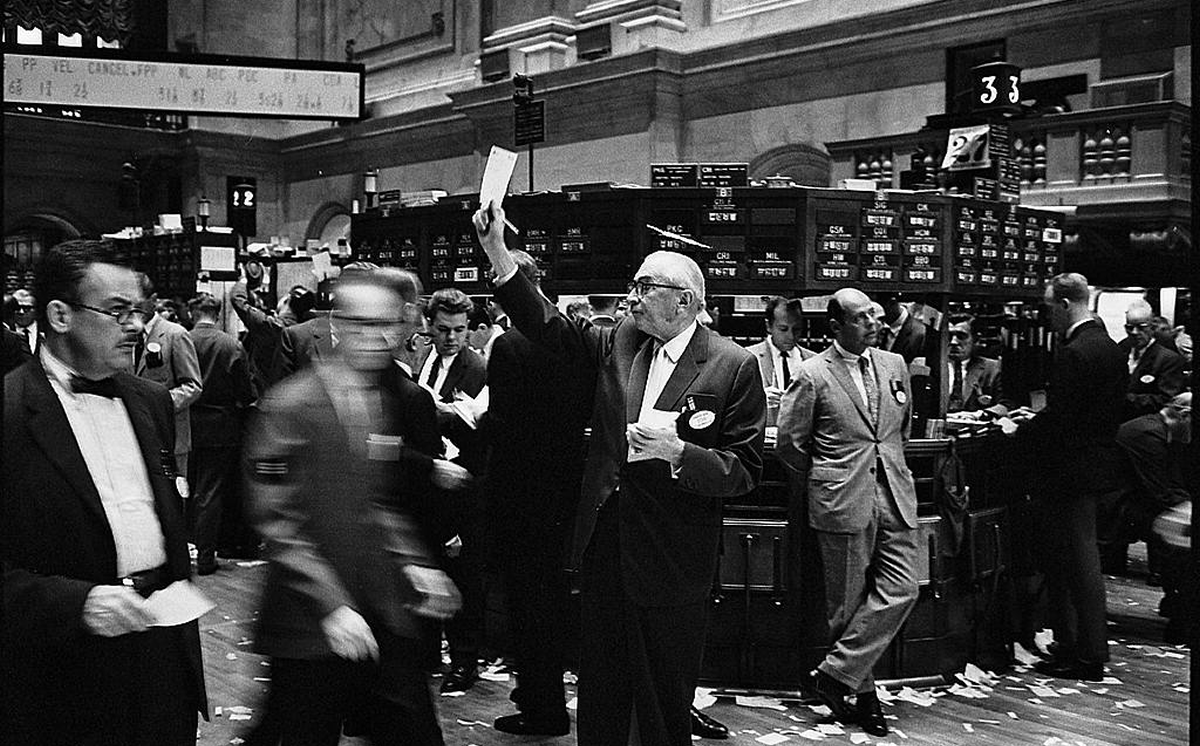by Martin Sibileau, A View from the Trenches
Deposits can not only fall driven by fear, but also by greed. This is the case in 2013 in Argentina, a likely template for the US.
(Click here to read this article in pdf format: April 8 2013)
It is hard to make sense of the markets these days. For instance, gold showed no support while the geopolitical situation in Asia deteriorated, Japan embarked in the mother of all monetization programs, and a member nation of what is supposed to be a monetary union was imposed controls on the movement of capital. Or take the case of the Euro, which jumped from $1.2750 to $1.2950 on the day of one of the most confusing and embarrassing press conferences the president of its central bank ever gave.
However, in a faraway land, where there is no shadow banking, leverage or even capital markets, economic fundamentals still hold, which and can help us, inhabitants of the developed world, visualize a dynamics lost in the shelves of our collective memory. The land I am referring to is Argentina, but not Argentina of 2001. Today, I want to write about Argentina of 2013, and no, I will not discuss their legal battles with Mr. Singer.
Introduction
The topic I want to bring your attention to refers to an earlier article titled “What causes hyperinflation and why we have not seen one yet” (December 18th, 2012). In it, I drew a few conclusions; the most relevant of which was that high inflation and high nominal interest rates are not incompatible, but on the contrary…they go together: There cannot be hyperinflation without high nominal interest rates. The article suggested that high interest rates are the product of a collapse in confidence, represented by a serious shrinkage of the deposit base in a currency jurisdiction. But the article was not exhaustive. It was limited to pointing out fear of confiscation, as the driver behind the collapse in confidence. This will be the driver behind the Euro zone break up. But there is another driver and Argentina of 2013 may be a template for the US. Bear with me…
Fear and greed
When human beings act/decide/choose, they face a risk/return trade off. When choosing whether or not to leave their savings deposited in a bank, indeed their decision can be driven by fears of confiscation. In other words, at a given return (almost 0% nominally and negative in real terms these days), if risk is perceived as too high, deposits will decrease or at best and at the margin, not increase. That was the scenario contemplated in my earlier article.
The most catastrophic example of the fear scenario is the monetary developments at the fall of the Roman Empire, when depositors took their monies and dug holes in the backyards of abbeys to hide them from either the tax man or barbarian hordes. However, the earliest documented example (by Isocrates; discussed by Prof. J. Huerta de Soto in his great book “Money, Bank Credit and Economic Cycles”) of this scenario dates back to 393 BC and took place in Athens, triggered by the war with Sparta and the victory at Thebes, when Passio, an Athenian banker could no longer hide the insolvency of his bank (Demosthenes seems to indicate that Passio had a leverage ratio of approx. 5 to 1). He was not alone. A general run also against the banks of Timodemus, Sosynomus and Aristolochus ensued and it resulted in a deposit freeze that lasted 10 years (ref. Bogaert, Banques et banquiers dans les cités grecques). Those who feared first, feared best.
Fast forwarding some 2,406 years to 2013, what I missed in my earlier article (although it was implied in subsequent ones: i.e. on gold manipulation) is the “return” or greed component of the decision to shrink deposits. By this I mean that, for a given, known and manageable risk, if the return is perceived as too low, the deposit base can also shrink.
The perception of a low return will be shaped in relative terms. If there is an alternative to placing savings in a chequing account, for same or lower risk, the deposit base will shrink. In the developed world, courtesy of the creation of fiat gold and the volatility it generated around the price of the metal, such alternative is still non-existent. This was the smartest move of central bankers. But with the Cyprus event and others to come, without a Plan B, even this volatility can be ignored in favour of a longer term view on gold.
Argentina 2013
An example of falling deposits driven by greed rather than fear is Argentina in 2013. Depositors there learned the “fear lesson” already 12 years ago and for that reason, today a US dollar under the mattress is always worth more than a US dollar deposited in a bank. But the story didn’t stop there. Later on, as it became increasingly evident that the confiscation by the government had not ended with the default of 2002, the US dollar market saw another segmentation. As the government competed with the public to source US dollars (to repay whatever was still left outstanding on their debt) and those dollars were out of the system, it decided to prohibit access to them in open markets. The repression began in earnest about a year and a half ago. For that “national and strategic” cause, even US dollar sniffing dogs were recruited to search for any US dollar bills, out of the system (watch here and here)
Since then, the market broke and there’s the official US dollar price, where of course you find no sellers, and the market price (for an unknown reason, called the “blue” market). The graph below (source: Reuters/La Nación) does not need additional comments; it is self-explanatory. Today, while an official US dollar is worth about 5,15 pesos, the market demands about 8,50 pesos, or a 2/3rds premium.

So far, you will be asking yourselves how this can be a template for the US. And you would be right: The gold market is still one and the US government will never have to compete with the public to source physical gold to repay its debt, which is denominated in US dollars. But there’s more to it..
Why it can be a template
But let me get back to my initial point: Deposits can also fall driven by greed, rather than fear. In Argentina of 2013, deposits in pesos are now starting to contract exponentially, not driven by fear but by greed. Why? Argentines observe the escalation in the price of the US dollar bill outside the system (+25% YTD) vs. the interest paid on peso denominated deposits (-10% in real terms) or stocks (+18.5% nominally), and correctly figure out that they are better off with a king-size mattress than a bank account. Now, that to me is likely to be a template of what may happen in the US, once the market for fiat gold collapses. Here’s why: If the fiat gold market broke in a run for physical gold, the credit multiplier on paper gold would be crushed and from that moment onward depositors in US dollars all over the world would see the performance of gold as a benchmark against US dollar deposits, just like Argentines today regard US dollar bills as a benchmark against their peso deposits. This is every central banker’s biggest nightmare: An asset whose price shapes inflation expectations.
The likely outcome of this would be an initial fall in USD deposits and a rise in interest rates, as the USD unsecured funding market would dry. Following this, the Fed, just like I am expecting the central bank of Argentina to do, would be dragged into a deficit (I am not going to explain here the mechanics of the deficit of a central bank. The reader may want to see my last article on hyperinflation, mentioned above).
As Argentina is at the gates of a new hyperinflationary process, it would be wise to follow it closely. It is a template. There are two conclusions that come to mind:
Conclusion No.1 : The Fed/US government would be better off not confiscating gold
Counter intuitively and contrary to the belief of the gold bug community, the US government would have every motive NOT to confiscate gold, for in so doing, they would trigger a run for physical gold and lose every leverage they have to suppress its price. This conclusion should hold even if a run for physical gold took place for other reasons. Their best move is to keep the suppression of the price of gold via fiat gold as long as possible.
Conclusion No. 2: The Fed would be more pressed than Argentina’s central bank to run a deficit
With the peso as a local currency, the pension funds nationalized, the absence of shadow banking and capital markets, if deposits in pesos drop, the central bank of Argentina does not worry about systemic contagion. As nobody there relies on the banking system to fund their businesses, the drop in deposits would likely end up affecting the profitability of the banks, with a high probability of seeing a complete nationalization of deposits.
The Fed however would be multiple times more pressed to intervene. Its liabilities affect credit and commodity markets worldwide, the pension and money market funds would be at the risk of collapsing. The high leverage of the shadow system would be too much. Therefore, the Fed would have to subsidize not just the US but the global banking system, to maintain US dollar deposits as a competitive alternative to gold worldwide. (Once more, to see how this would take place, please see this link)
Why I disagree with Martin Feldstein
Continuing with the topic of rising interest rate, in this recent article (link), Martin Feldstein expressed his concerns on the subject. Unfortunately, he does not explain how he sees that rise being triggered. He simply begins with “When interest rates rise…”. Unlike him, I have been explicit at least since December 2011: To me, the most likely driver is a wave of corporate defaults coming from the Euro zone, forcing the Fed to become the lender of last resort (in fact, they already are) and triggering a repudiation in US Treasuries. As a consequence, the repudiation of US Treasuries would further spark the fall of the money market and probably that of a commodity market clearinghouse. In this context, the price of gold would not fall as Mr. Feldstein predicts.
In my scenario, before (i.e. independently of) the rise in rates, credit spreads would rise as defaults increase. Markets would realize that the Fed is no longer in control and that the transfer of losses to the public sector are no longer bearable and the Fed would be forced to buy any US Treasury the market sells.
Martin Feldstein’s story has the opposite narrative thread. According to him, rates will rise and defaults will follow. In his words: “…Long-term interest rates are now unsustainably low, implying bubbles in the prices of bonds and other securities. When interest rates rise, as they surely will, the bubbles will burst, the prices of those securities will fall…”
How does Mr. Feldstein expect that rates to rise? Not because the Fed raises them, but because inflation expectations would drive nominal rates higher: “…If inflation turns out to be higher (a very likely outcome of the Fed’s recent policy), the interest rate on long-term bonds could be correspondingly higher…”
Mr. Feldstein omits to tell us what he thinks would cause inflation to be higher than the 2% targeted by the Fed, but my guess is that he has the mainstream economics model in his mind, whereby as the output gap decreases, prices increase. I will have more to say about such models in subsequent letters, but for today, let me end with this: There is no such a thing as an output gap. The notion of its existence is an ad-hoc mental tool, which dismisses the role of the price system in allocating resources.
About Martin Sibileau
Martin Sibileau graduated from the Universidad de Buenos Aires in 1997, with a BA in Economics. He holds a Masters in Finance from the Centro de Estudios Macroeconomicos (Buenos Aires, Argentina) and a Masters in Business Administration from the Richard Ivey School of Business (Univ. of Western Ontario, London, ON, Canada).
Mr. Sibileau currently works as Director for the Loan Portfolio Management team of a major Toronto-headquartered financial institution.
Since 1997, he has held various positions in the areas of corporate finance, strategy consulting, international banking, commercial banking and risk management.
Copyright © A View from the Trenches












